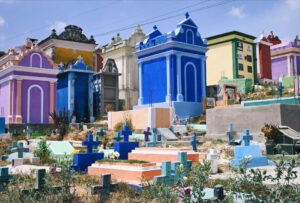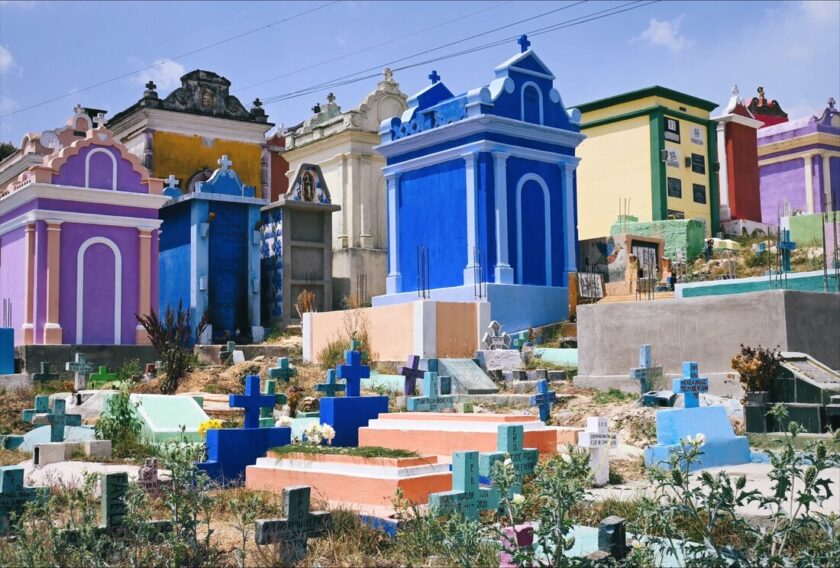
Latin America is known for its exuberant and colourful culture. Nowhere is this more true than Guatemala.
All over the land, you will be greeted with a kaleidoscope of colours woven deeply into the Maya heritage. Vibrant murals adorn the walls and beautiful textiles reflect the cultural identity and artistic expression of the many indigenous peoples.
It doesn’t stop there, colours of all shades extend to celebrate even the departed. Head to any cemetery and you will find graves and tombstones painted in bright pigments, and perhaps none more brightly than Chichi Cemetery in Chichicastenango, one of the world’s most colourful cemeteries.
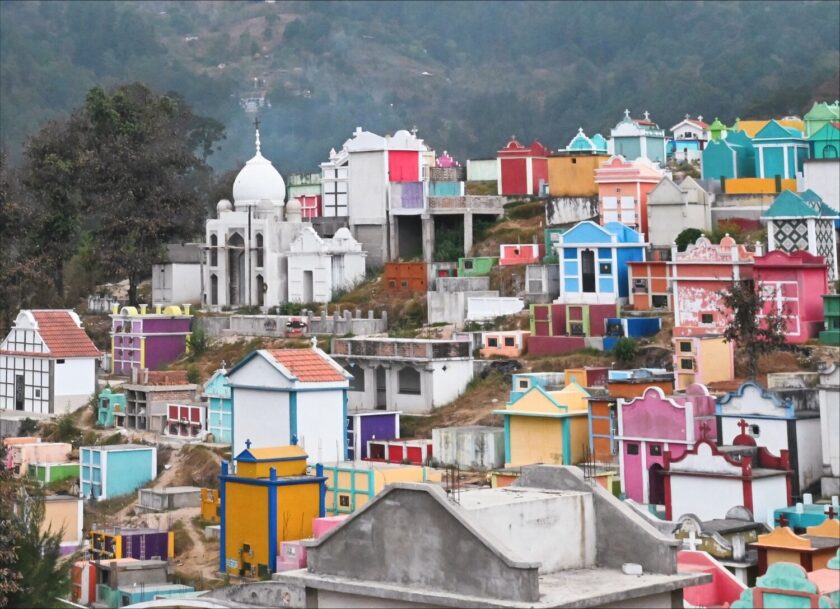
Chichicastenango is famous for its market that operates every Thursday and Sunday, supposedly the largest market in Latin America. A bold claim, but when you see and experience the crowds, you can believe it.
Surrounding the market is a whirlwind of sellers and buyers, hoping to either make money or strike a deal over an item that will likely travel thousands of miles back to a new home, on a completely different continent.
Such is the fever that surrounds Chichicastenango market that the rest of the town and its unusual attractions remain relatively overlooked. This includes the cemetery.
Visiting Chichicastenango Cemetery
Away from the town centre of Chichicastenango on a hill that is rarely frequented by tourists, one of the most colourful cemeteries in the world is hidden in plain sight.
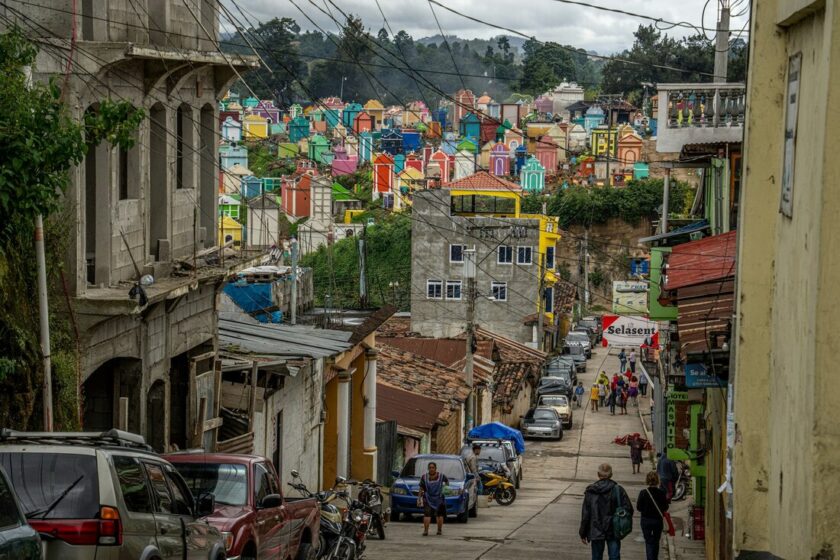
Since I was spending the night in town, I visited the cemetery twice. As soon as I arrived at my accommodation and dropped off my luggage, I dashed back out, hoping to see it before nightfall. The weather had been overcast all day so I knew daylight wouldn’t last long.
The cemetery was easy to spot. A platter of candy-coloured tombs and mausoleums protruded up from the hilltop and I found a little path to the side and walked up to the entrance.
It was certainly a unique sight. Of all the cemeteries I have ever visited (I wouldn’t say I make a strong habit of it, but I’ve been to a fair few), none had ever veered outside a palette of grey hues. Any notion I had of what a cemetery is ‘supposed’ to look like had been completely turned on its head.
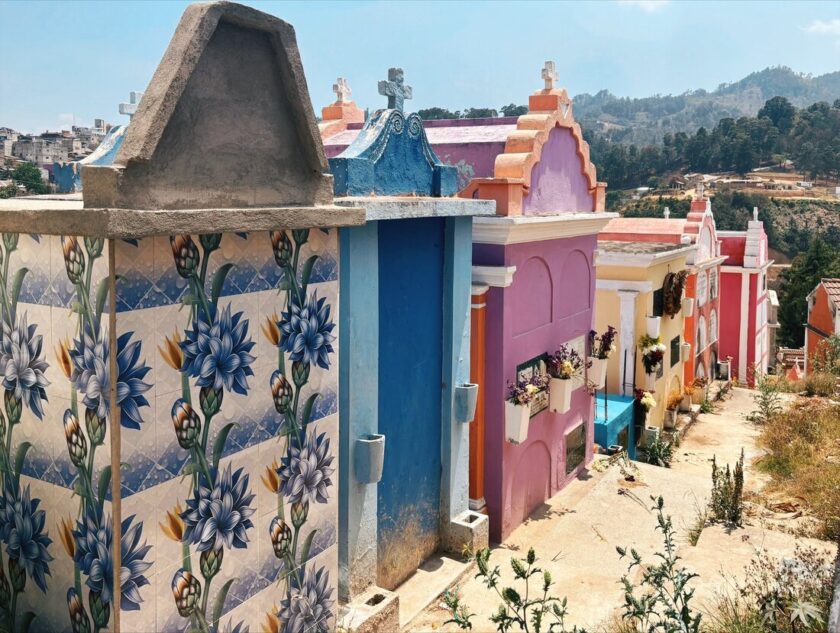
While there was a pervading sense of sorrow, sitting alongside it was something you could describe as celebratory, a feeling of life, even. Colour does that though, doesn’t it? It has the power to bring things to life.
Steeped in Maya tradition, the vibrant rainbow of pigments celebrates the afterlife, and can symbolise many things to different people, like a colour-coded clue that’s meant for decrypting the dead.
Soon enough, night was approaching, the clouds had grown thicker and darker, casting a shadow over the town. The colours were starting to fade, and a foreboding feeling started to creep over the cemetery. This may well have been my mind playing tricks on me, nevertheless, I took it as a cue for me to leave and resolved to visit again the following day.
Burial rituals
As sunshine broke through the sky the following morning, I headed over to Chichicastenango Cemetery once more. The market was in full swing, adding an extra layer of buzz through the air and commotion spilling out across the streets.
In a town where the majority of the population is indigenous ‘Mayan K’iche’, the cemetery is also the home to a variety of rituals on special days like Easter Week and the Day of the Dead, including incense, alcohol, and the occasional chicken as offerings to the deceased.
My timing was fortunate, it was Palm Sunday, which had drawn in a few regional visitors to the cemetery. While keeping a respectful distance, I saw families lighting fire and incense as they gathered together in chant.
Resting on tombstones I spotted maize (corn) which has significant meaning. Maize is a symbol of rebirth, and also the food that is believed to sustain the dead as they journey from the ordinary world to the otherworld.
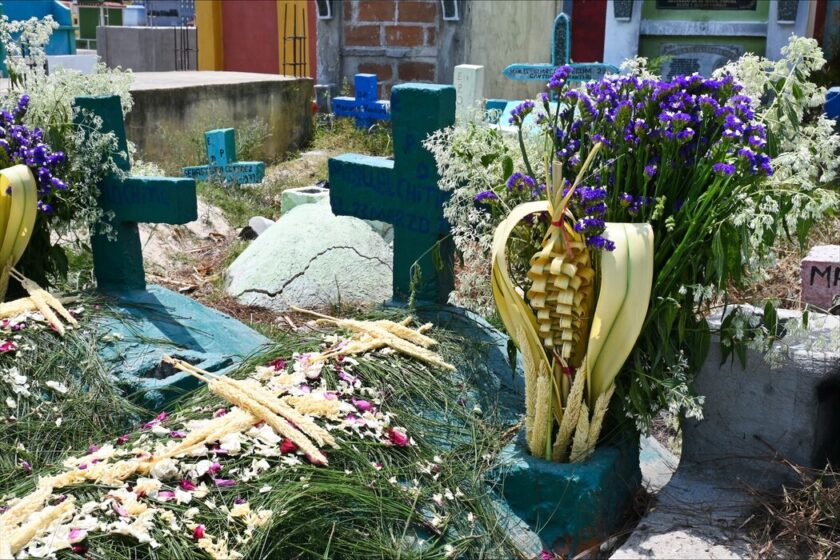
Colours & symbolism
Curious to know more about what some of the colours represented, a man working at the hotel I was staying offered some insight.
I learnt that traditionally many tombs are coloured based on the person’s family status, but more and more frequently, they are painted using the favourite colour of the departed, as a way of honouring and remembering the dead.
Specific colours also have special symbolism, and this might influence what colour the tombs are painted. For example, white represents purity, turquoise is for protection, and yellow represents the sun’s life force.
I’m not sure how true this is, but I read somewhere that families of the deceased will repaint the tombs of their loved ones on the Day of the Dead. While I wasn’t able to confirm this, I did spot an array of artistic murals that appeared much newer than the mausoleums they were painted on.
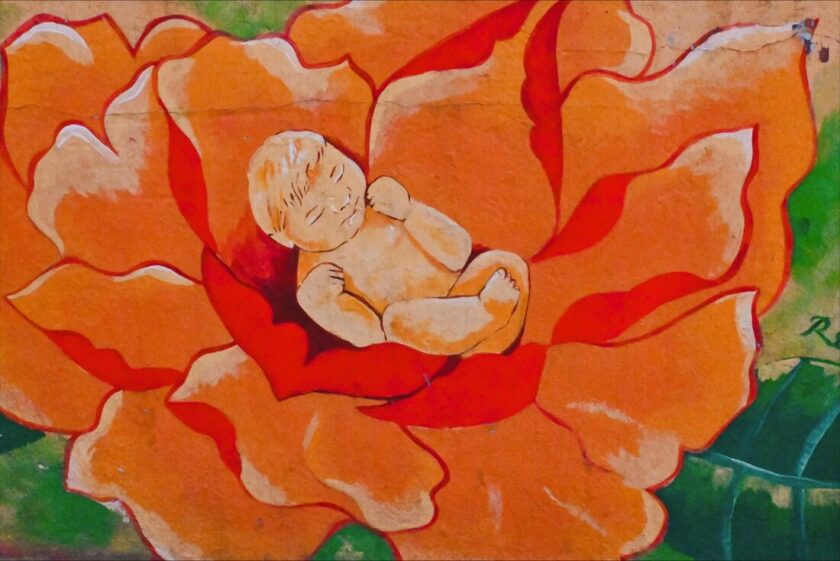
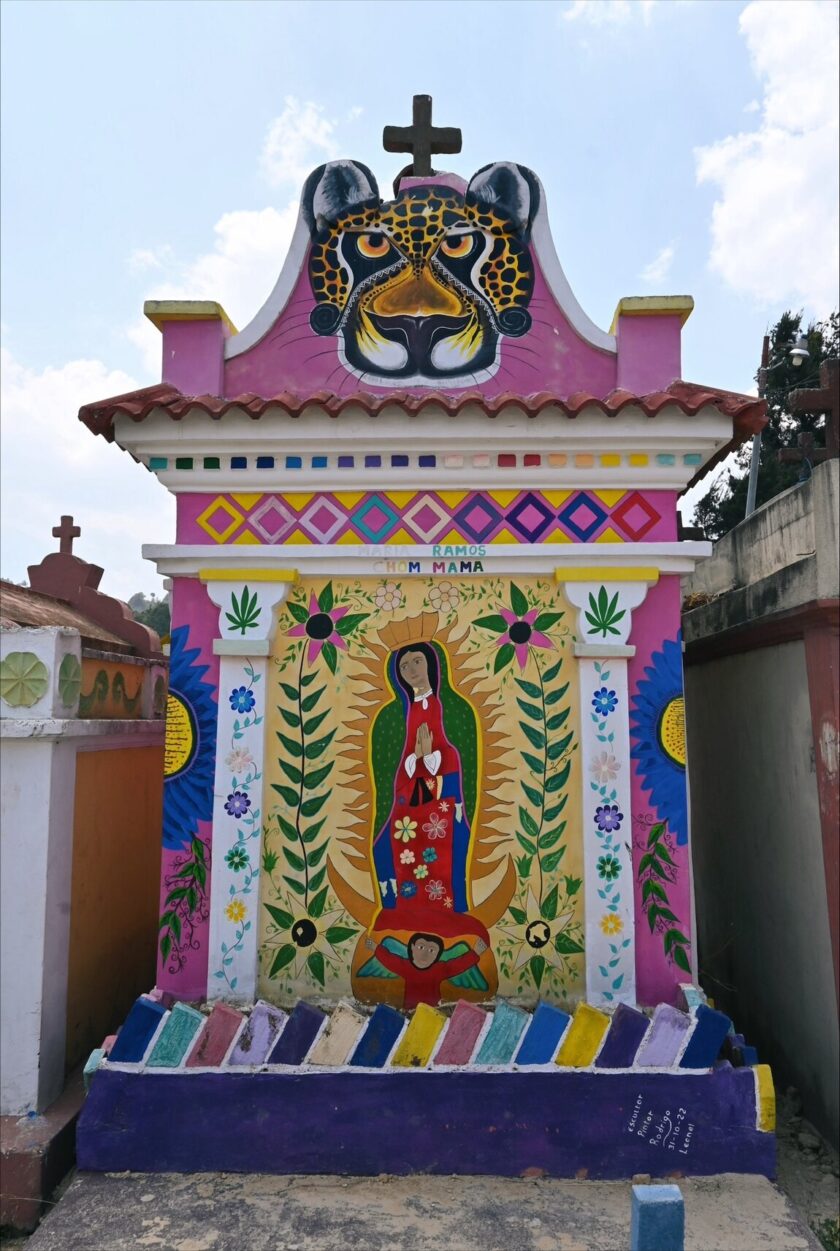
Reflections on visiting Chichicastenango Cemetery
While I was initially called by the bright colours of Chichicastenango Cemetery, it turned out to be so much more than that.
My visit made me think about how my relationship to death has been largely shaped by the attitudes and practices that are prevalent in Western culture.
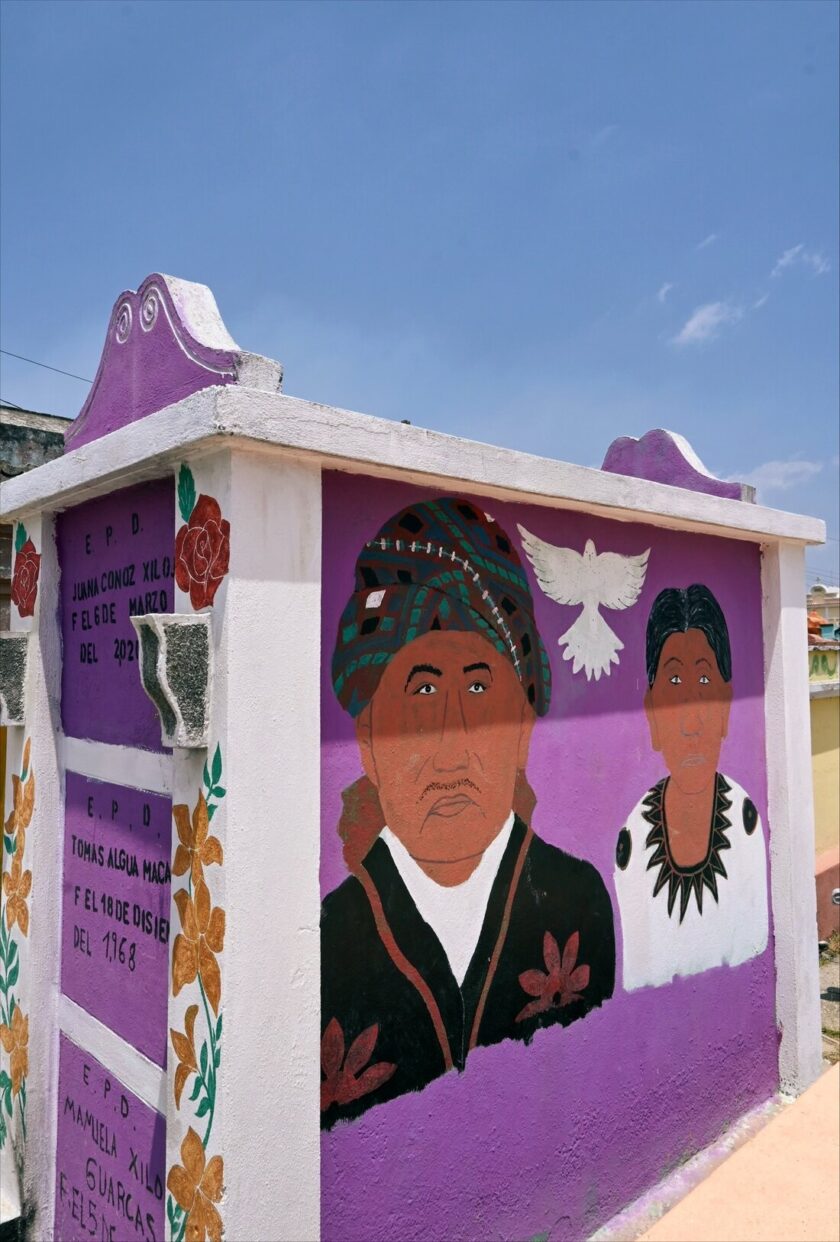
Seeing all these colourful tombs made me realise that the Mayas relationship to death is very different to that of that UK. I can’t help wonder how my attitude toward death might be different if I lived in a country such as Guatemala.
Colour too has a different meaning. How colours are perceived depends a lot on a person’s culture. In the UK, there’s a general consensus that darker, sombre tones are the appropriate hues associated with grief and mourning. The same is not true in Guatemala and a visit to Chichicastenango Cemetery illustrates this point.
In the UK we have our own visual etiquette or language for displaying grief and respecting the dead so to speak. But I wonder how introducing more colour might affect how we process grief – would it be more uplifting? Would it help the grieving process?


